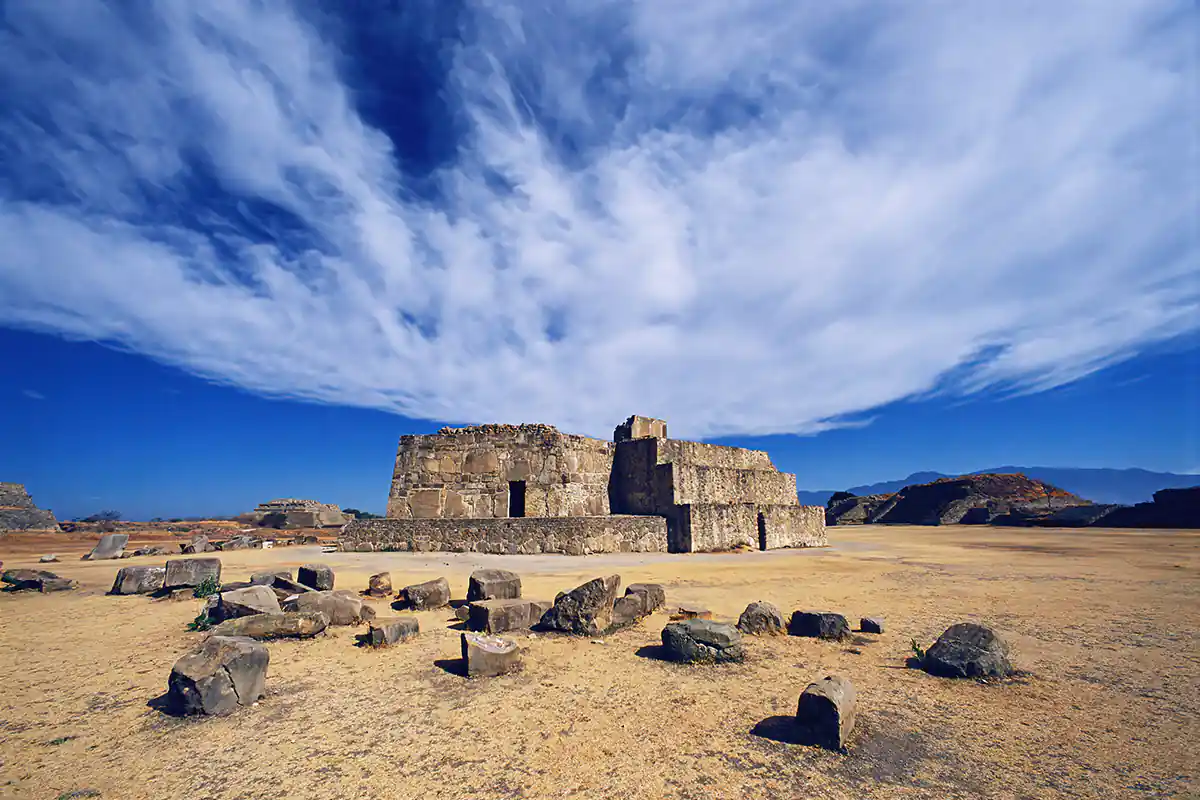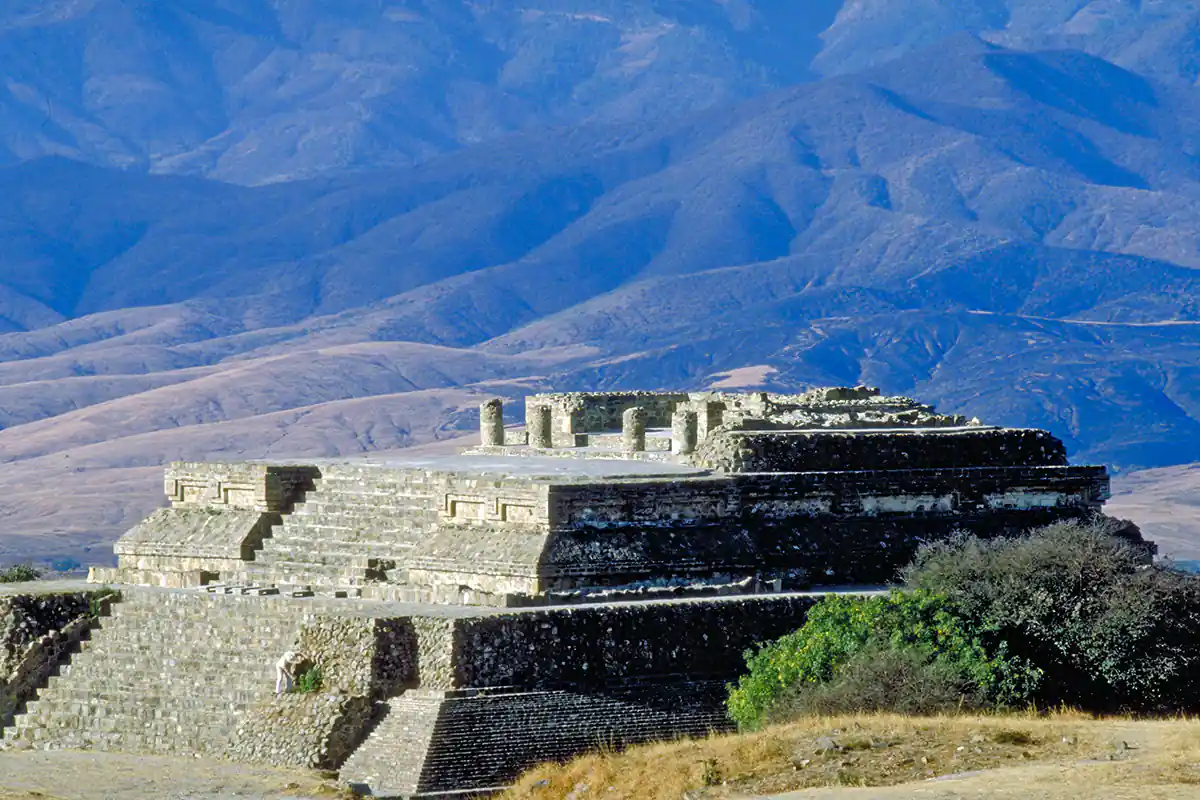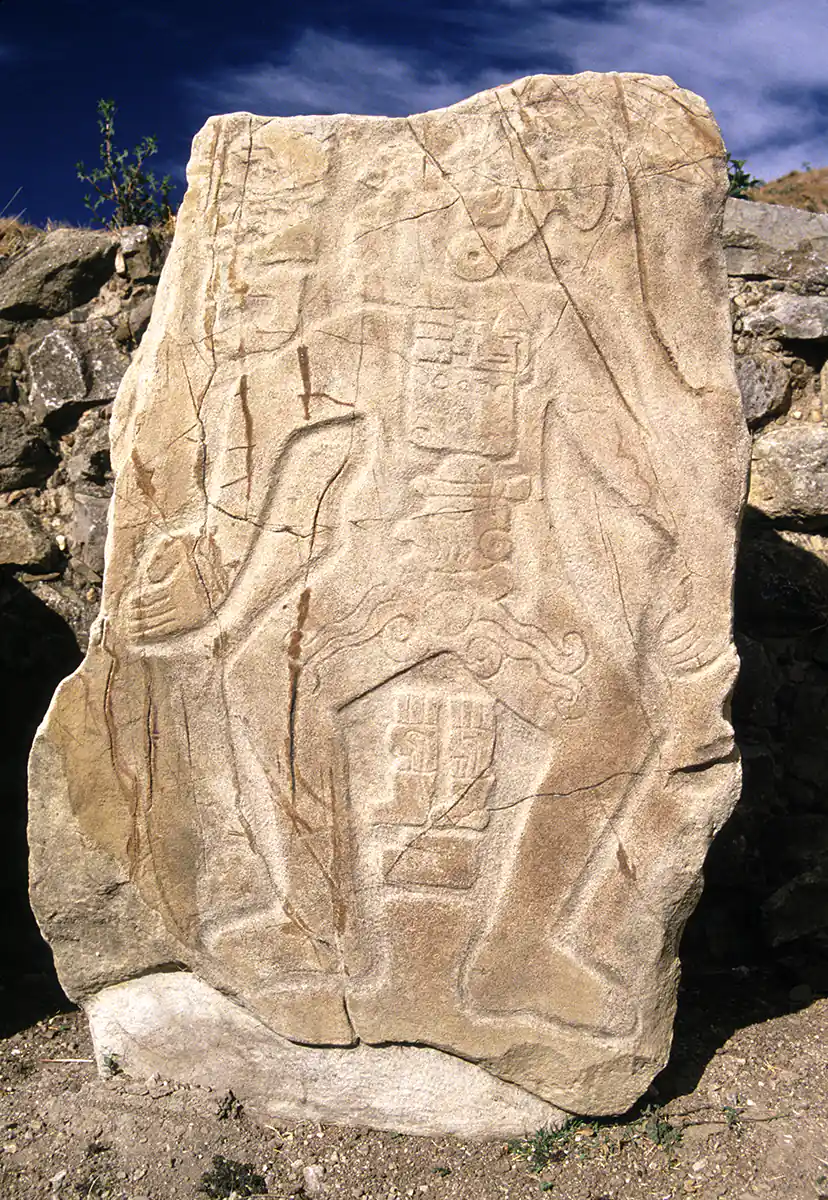Monte Alban
Soaring above the valley and city of Oaxaca, the hilltop ruins of Monte Alban is the second largest ceremonial site in Mesoamerica, exceeded in size by only Teotihuacan near Mexico City. One ancient site name was Sahandevui, meaning 'at the foot of heaven.’ The ruins are ancient. Elaborate yet currently undeciphered hieroglyphs found here are among the most ancient writings in Mesoamerica. Equally mysterious are the strange rock carvings known as danzantes, which depict humanoid figures with Negroid facial features. Similar to carvings found at Olmec sites in other parts of Mexico, these decidedly non-Mexican figures and the hieroglyphic writings seem to indicate the possibility of contact and influence by cultures far distant from the western hemisphere.
The first known buildings were constructed between 1000 - 800 BC, but most of them have now been destroyed or buried beneath later Zapotec structures. The Zapotec occupation of the site dates from 100 BC, and most of the enormous structures standing today date from the Classic phase of 300 - 900 AD when Monte Alban became the principal ceremonial site of the Zapotec empire. The complex contains large plazas, numerous pyramids, a ball game court, underground passageways, and over 170 tombs. The site was abandoned as a functioning ceremonial center during the 10th century, although it was used as a burial place by the Mixtecs.
Mound J, illustrated in the photograph, is a highly refined and complex astronomical observatory. A curiously shaped arrowhead structure, situated at an angle of 45 degrees to the central axis of Monte Alban, Mound J was aligned with the point in the western sky where Alnilam, the center star of Orion’s belt, sets. Built sometime between 100 BC and 200 AD, Mound J also has astronomical alignments with the setting positions of the Southern Cross, Alpha and Beta Centauri, and the rising position of Capella, the brightest star in the constellation of Auriga.
Monte Alban is an enigmatic place. Conventional archaeological theory is at a loss to explain why this particular site was chosen; it is upon a tall, steeply walled plateau, it has no source of water, it was never used as a habitation center, and there is no evidence of it ever being used for strategic or military purposes. Furthermore, it was challenging to construct; the building rocks were laboriously carried from the valley far below, the builders were small people (averaging only 5 feet tall), they had no metal stone-cutting tools, and they had not discovered the transportation capacities of the wheel. Yet, given all this, the site became Mesoamerica's second-largest ceremonial center. How can we explain this immense human endeavor? Archaeologists may respond that the grand structures represent a social and religious momentum, an architectural elaboration of the earlier sacred use of the site. But then, how are we to account for that early sacred use?
Perhaps an insight into the enigma may be found in the structure known as mound H, adjacent to mound J. The author spent many hours dowsing the entire complex of Monte Alban and found several lines of 'energy' leading to and intersecting at a particular place on mound H. Dowsing this point, I observed the same sort of reactions that I had found dowsing the primary areas of sanctity in pilgrimage temples, shrines and mosques all over the world. These places, which I have come to call 'power points,' seem highly charged and spiritually magnetic. I think ancient people found these places and, recognizing their benefits, established shrines at them. Over the passage of centuries or millennia, the original shrines would be architecturally elaborated, increasingly complex religious practices would develop, and memories of the discovery of the sites might be forgotten. Whatever the overlay, however, from early shrines to thriving ceremonial centers to archaeological ruins to contemporary tourist sites, the power and spirit of Monte Alban remain strong today.

Martin Gray is a cultural anthropologist, writer and photographer specializing in the study of pilgrimage traditions and sacred sites around the world. During a 40 year period he has visited more than 2000 pilgrimage places in 160 countries. The World Pilgrimage Guide at sacredsites.com is the most comprehensive source of information on this subject.



